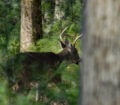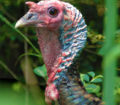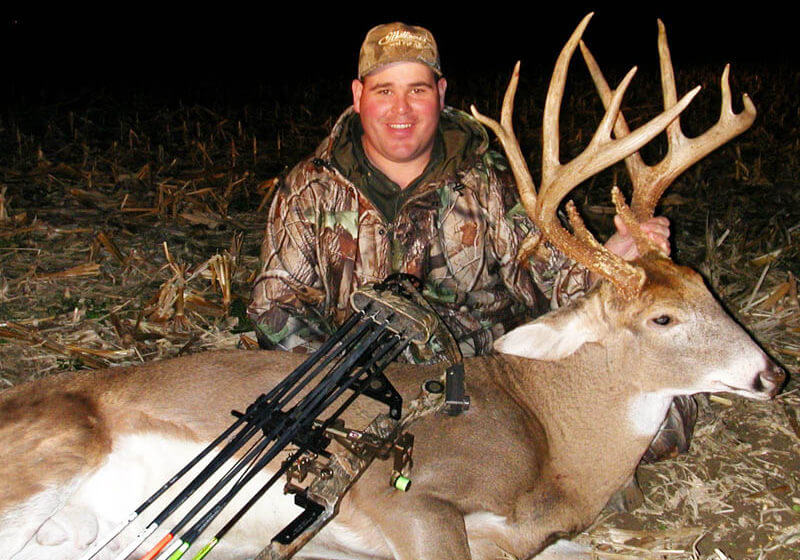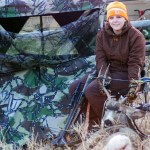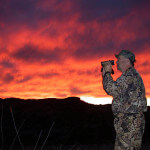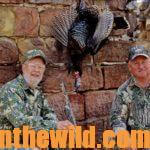Editor’s Note: Can you identify a buck fast and get off a clear shot before he vanishes in thick brush? Although not easy, there are ways you can speed-up your reaction time. How does a batter see a ball coming toward the plate at 90 mph, and time his swing to hit the ball? Travis Fryman, who played with the Detroit Tigers and the Cleveland Indians for 13 years, batting in 1,022 runs, making 223 home runs and five times earning MLB All Star status, says, “I not only can see the ball as it leaves the pitcher’s hand, but I also can see the seams of ball as it rotates toward me.” Fryman, a longtime hunter and fisherman, uses his vision skills he sharpened working with a developmental optometrist on his baseball hitting to hunt more effectively. The quicker you can see and identify a buck and determine the direction he’s traveling, the quicker and more accurately you’ll shoot. You must understand the difference between eyesight and vision. If you start now, by the time deer season arrives in the fall, your ability to see deer greatly will have improved. NFL teams use developmental optometrists to teach quarterbacks to spot open receivers. One friend of our son’s went to a developmental optometrist for 6 months to improve his vision to get accepted into the Navy pilot program.
 Developmental optometrist Dr. Gary Etting says, “A person may have eye-coordination problems with his eyes. One eye may tend to wander from the target, while the other eye tries to concentrate on it. When these two separate signals arrive in the brain, there is confusion. Sportsmen with this problem will judge game to be either more to the left or more to the right of where it actually is. However, since these functions happen subconsciously in the hunter’s visual and mental systems, he realizes only that he’s missed the game.”
Developmental optometrist Dr. Gary Etting says, “A person may have eye-coordination problems with his eyes. One eye may tend to wander from the target, while the other eye tries to concentrate on it. When these two separate signals arrive in the brain, there is confusion. Sportsmen with this problem will judge game to be either more to the left or more to the right of where it actually is. However, since these functions happen subconsciously in the hunter’s visual and mental systems, he realizes only that he’s missed the game.”
Other eye-coordination disabilities may limit a hunter’s proficiency in accurately computing his distance from a deer. People whose eyes are inclined to turn outward generally judge game to be farther away than it actually is. Hunters who judge things to be closer than they really are may have eyes that want to cross. A hunter who often follows a good day of shooting with a lousy one may be suffering from one of these visual disabilities. So, one key to determining if you have eye-coordination problems is a lack of consistency in hitting targets.
The main reason that many hunters today don’t see well in the woods or don’t shoot well once they locate animals, however, is that our lifestyle has changed dramatically from what it was when we were a society of hunters and farmers. The amount of time a person spends indoors studying, writing or working with a computer also has a direct bearing on his ability to calculate space and distance to a target outdoors. If you use your eyes 8 hours a day doing close work and only 1 hour a day looking at different objects, naturally your eyes will perform better at close work than at distant work.
 “One of the problems that many city dwellers face today is a loss of the ability to judge distance,” Dr. Gary Etting, a developmental optometrist in Encino, California, says. “For instance, if you ask a city person how far it is from his home to his office, he may say 20 minutes, but he may not know what the distance is in miles. If you ask the same question of a rural resident, he will tell you the distance in miles, because he’s accustomed to measuring distance in terms of space – feet, yards and miles.”
“One of the problems that many city dwellers face today is a loss of the ability to judge distance,” Dr. Gary Etting, a developmental optometrist in Encino, California, says. “For instance, if you ask a city person how far it is from his home to his office, he may say 20 minutes, but he may not know what the distance is in miles. If you ask the same question of a rural resident, he will tell you the distance in miles, because he’s accustomed to measuring distance in terms of space – feet, yards and miles.”
Recognizing that outdoorsmen have visual problems, the hunting and shooting industry provides optical aids for them. One reason the rifle scope has been developed is to eliminate the problem of seeing a rear sight, a front sight and the target at the same time. A scope eliminates this problem by putting the image and the aiming point in exactly the same plane. This is particularly important for older hunters who have lost much of their ability to coordinate their vision.
Improper use of these optical aids, however, can be detrimental, rather than beneficial. The late Dr. Don Getz, a developmental optometrist who worked with Olympic sports teams to improve their vision once explained, “Using binoculars and scopes for an extended time can cause eye fatigue and can reduce the hunter’s chances of seeing clearly enough to make an accurate shot. But occasional use of binoculars and scopes has no detrimental effect on the hunter’s performance. The best way to work with binoculars and scopes is to use them for a maximum of 3-5 minutes at a time.”
Our visual systems are like computers, with the information taken in through the eyes and then relayed to the brain. The visual skills required for hunting can be learned and refined at home and in the field through practice.
 A developmental optometrist can determine in what area a hunter’s visual skill is deficient and then can develop a personalized therapy program to improve those skills. For a listing of doctors in your area, contact the non-profit Optometric Extension Program Foundation at https://www.oepf.org or 410-561-3791. Check out the American Optometric Association (www.aoa.org).
A developmental optometrist can determine in what area a hunter’s visual skill is deficient and then can develop a personalized therapy program to improve those skills. For a listing of doctors in your area, contact the non-profit Optometric Extension Program Foundation at https://www.oepf.org or 410-561-3791. Check out the American Optometric Association (www.aoa.org).
To learn more about hunting deer with John E. Phillips’ Amazon Kindle eBooks, print books and Audible books and Nook books, click here at https://johninthewild.com/books/#deer. You can type in the name of the book and download it to your Kindle, and/or download a Kindle app for your iPad, SmartPhone or computer. For a free download on how to make jerky from venison to provide a protein-rich snack, choose “How to Prepare Venison Jerky: The Ultimate Snack Food” at johninthewild.com/free-books.

